I mentioned a little earlier that Space Squid will publish this issue in clay tablet format. This afternoon I made the first prototype in this series. So why don’t I walk you through the process?
Of course I have no intention of hand-copying an entire print run of clay tablets, impressing each stroke of each letter one by one. Instead, I plan on cheating, by imprinting the issue only once onto modeling clay, making a master template, and pressing the master into multiple copies of clay tablet.
I start by pressing modeling clay into a mold and rolling it flat with the only cylinder I had on hand, a AA battery.
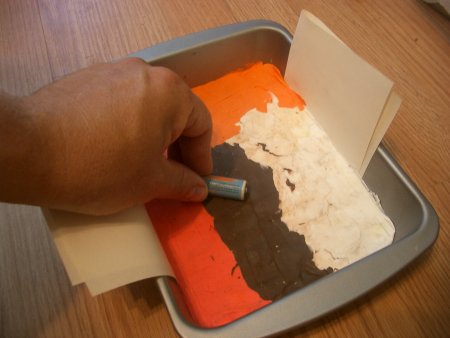
Yes, I am just that ghetto.
Then I carved a stylus from a stick I found in the backyard. The wedge at the tip is functionally not dissimilar to the styluses used by Sumerian scribes to press little cuneiform wedges in clay tablets.
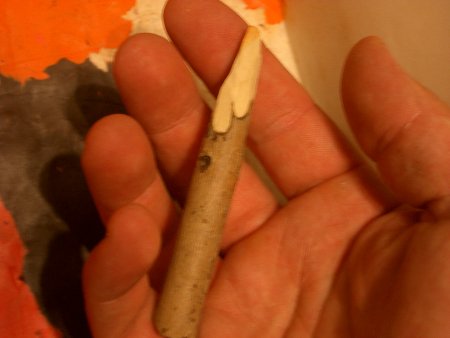
Using a cuneiform-esque font, I wrote out the first half of Kevin Brown’s short story "Hunting Bigfoot." This will become the template for the front face of the issue.
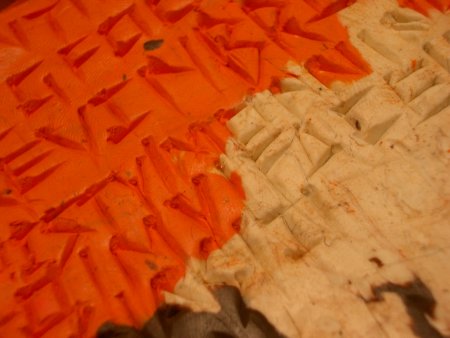
With the text completed, the next step is to make a polyester-resin mold. Pictured is the casting resin, catalyst, and measuring cup.
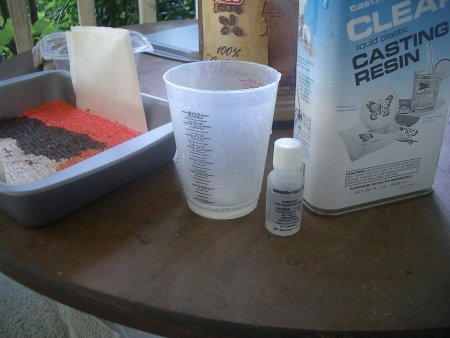
Sixty-four drops of catalyst are mixed vigorously into the resin. The catalyst produces heat which helps the thermo-setting plastic to turn solid.
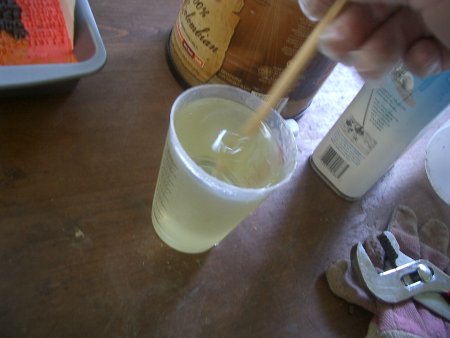
The resin pools over the mold and seeps into every crevice.
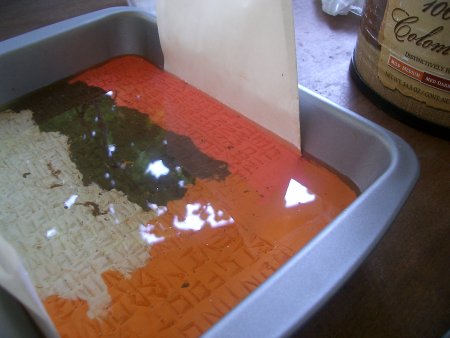
The next morning, with the help of the catalyst and the hot Texas nights, the resin is perfectly clear and hard.
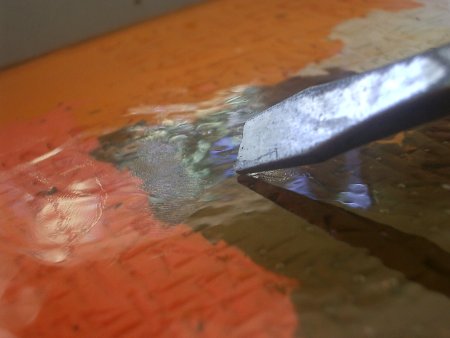
The resin shrinks just a little as it hardens, so it is pops out of the metal tray relatively easily.
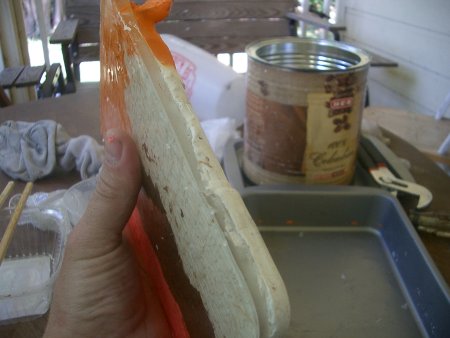
Getting the modeling putty off the plastic is a little harder.
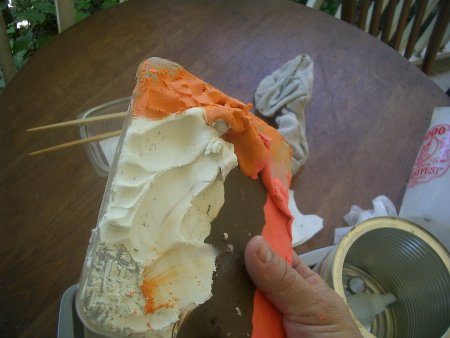
Luckily the impressions of the characters are not particularly delicate.
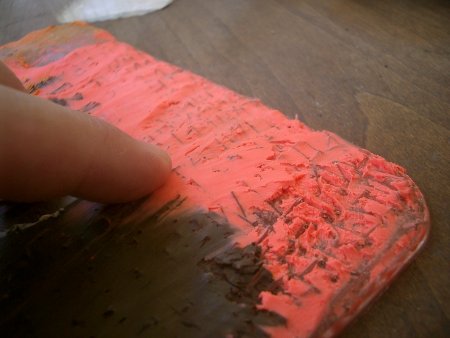
First, I discover that a little bit of rubbing alcohol and a toothbrush don’t quite do the trick of removing the modeling clay.
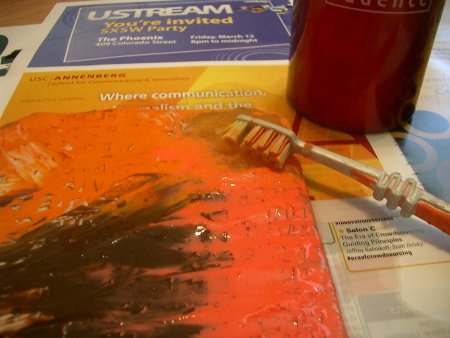
Neither does a lot of rubbing alcohol.
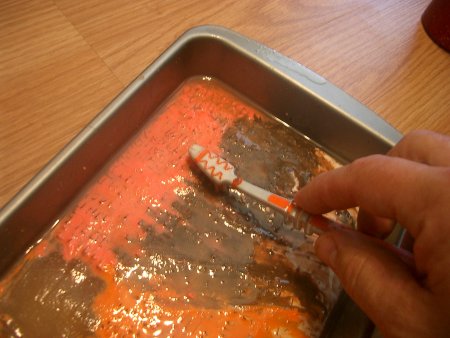
Or dish soap.
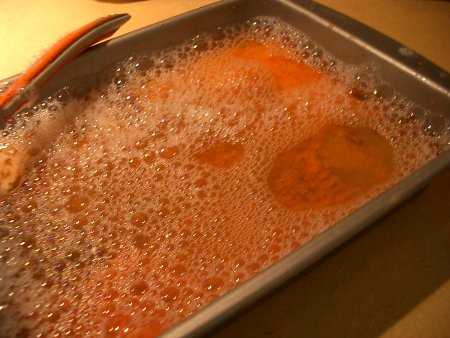
But boiling hot water does the trick marvelously.
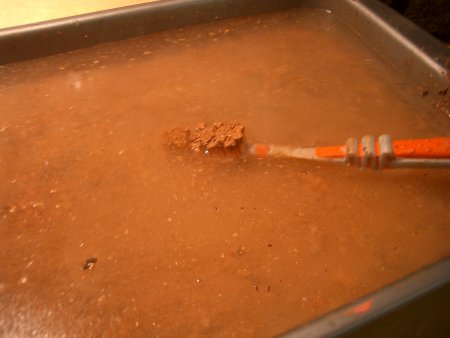
Because this is thermo-setting plastic and not thermoplastic, the master template retains most of its rigidity despite the high temperatures.
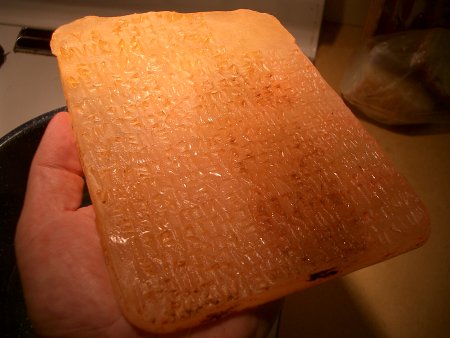
Each character impression is captured with a high degree of accuracy.
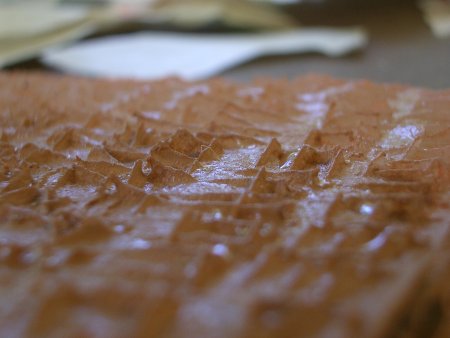
Because I’m lazy, I bought clay from the store instead of spending hours digging it out of the backyard and processing it and cleaning it of rocks. The store bought clay simply fits straight into the mold.
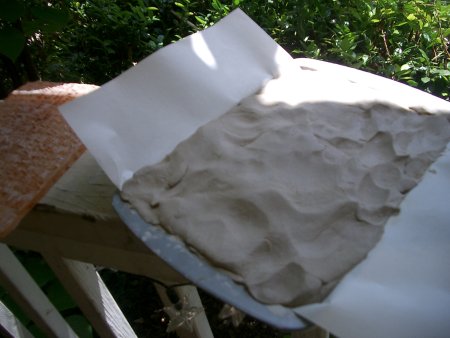
The template presses into the clay.
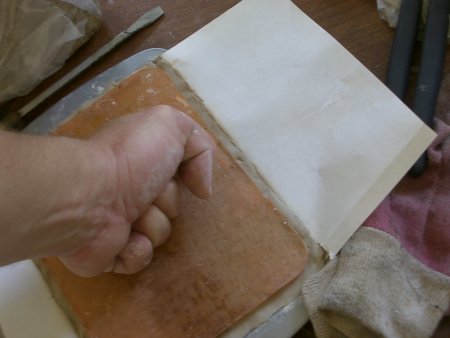
Revealing the story, in a form about as legible as the original Sumerian clay tablets.
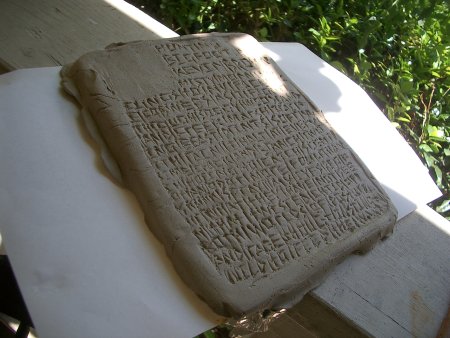
The Space Squid seal which I mentioned earlier goes in the blank square in the corner.
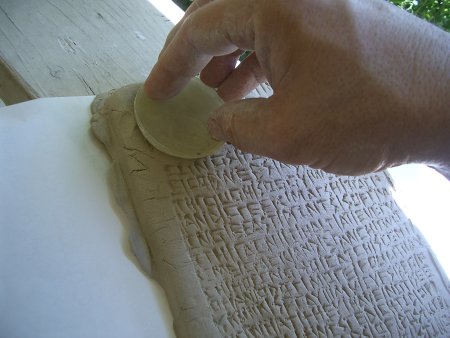
It says "Space Squid 9" in phonetic-numerical Ugaritic cuneiform.
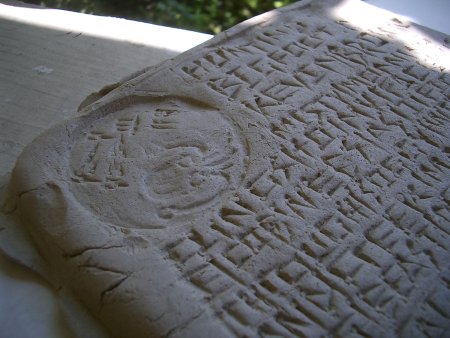
The whole tablet goes into the Texas sun which is scarcely cooler than the sun-baking process of Mesopotamia.
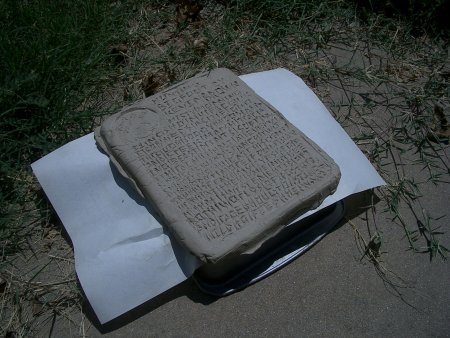
Next step is to finish the template for the other side, which includes the finale to the "Hunting Bigfoot" story, advertisements, and jokes if there’s room. Essentially what you usually get with a Space Squid issue.